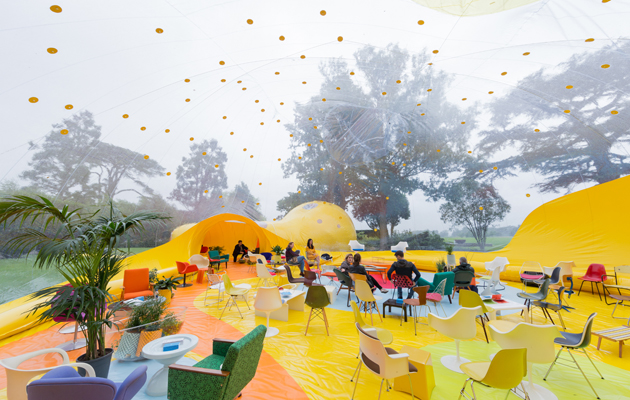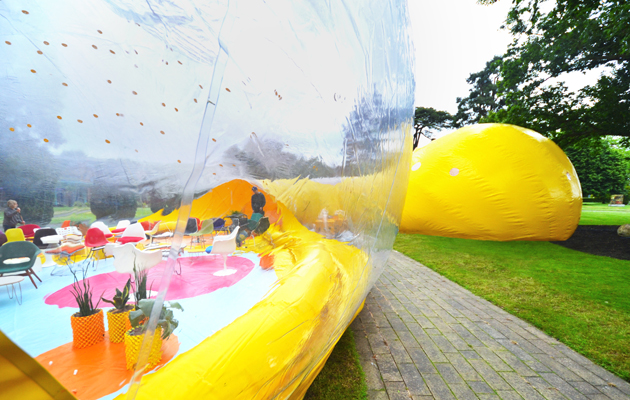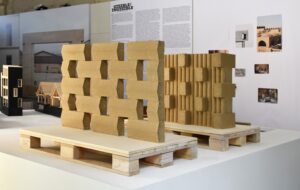|
|
||
|
The cheerfulness of Second Home’s latest pop-up has more potential to foster diversity than its much-hyped East End office space ‘Last time it was up, we had David Adjaye, Tony Fadell and Wired editor David Rowan giving talks at the Founders Forum summit in June – now we have about 500 toddlers running around,’ says Rohan Silva, who co-founded Second Home with Sam Alderton. The three of us are walking around the Second Dome, a large ‘architectural pneumatic structure’ designed by Madrid-based Dosis, which, for a single, drizzly day, landed smack-bang in the middle of Hackney’s London Fields park. The dome’s temporary location, as well as its function – hosting a ‘kids’ day’ – were strategically chosen to herald the opening of a new collaborative workspace, this time with an on-site nursery, which will be opened in the area in 2017. This bubble builds on the aesthetic of the inaugural Second Home, a renovation of an old carpet factory by SelgasCano in 2014 – cheerful, curvilinear and plastic. But if the architectural critics were quick to invoke Superstudio’s Continuous Monument as the spiritual father of the latter – a vast horizontal, landscape riddled with life-sustaining utilities (in 2016, this means access to a restaurant, wifi, yoga mats and vintage furniture) – then the thing in London Fields is all Archigram, body and soul. The Cushicle and Suitaloon, mobile living environments comprising inflated membranes, meet Instant City, a proto pop-up strategy, in which ready-made cultural facilities were airdropped into pedestrian locations in order to transform them. In the near future, the inflatable dome is set to travel across London, hosting events as diverse as film screenings, literary discussions and an activity evening for senior citizens.
‘There’s an ephemerality to it that really attracted us,’ Adlerton says. ‘What Dosis has done really fits that. It’s an architecture than can happen anywhere.’ The structure comprises three interlinked inflatable modules of varying sizes, which can be reconfigured depending on the event with the help of zippers that hold the entire thing together. ‘One of the main aspects of Second Dome is versatility. This architecture is about enabling life,’ Dosis co-principal Ignacio Peidro says. The PVC dome can be inflated in as little as 30 minutes, fastened and fitted out in three hours and can accommodate up to 400 people. It’s as successful as one might imagine it to be. If the Second Dome did well hosting a high-powered tech get-together, it performed just as admirably with face-painting workshops, chemistry demonstrations and talks for parents. The cavernous, light-filled space allows for plenty of views outside and provides a reliable shelter from the rain. The Second Home founders sometimes engage in thinly veiled techno-optimism. Their office space does not actually ‘bring together diverse groups of people’ in the true sense of the word, and the community is as unconsciously self-selecting as it is consciously curated. The Second Dome, however, has a much lower low barrier to entry – the kids’ activities were free and those for adults cost just £5 – and much more potential to be an effective social condenser. |
Words Peter Smisek |
|
|
||
|
|
||





















